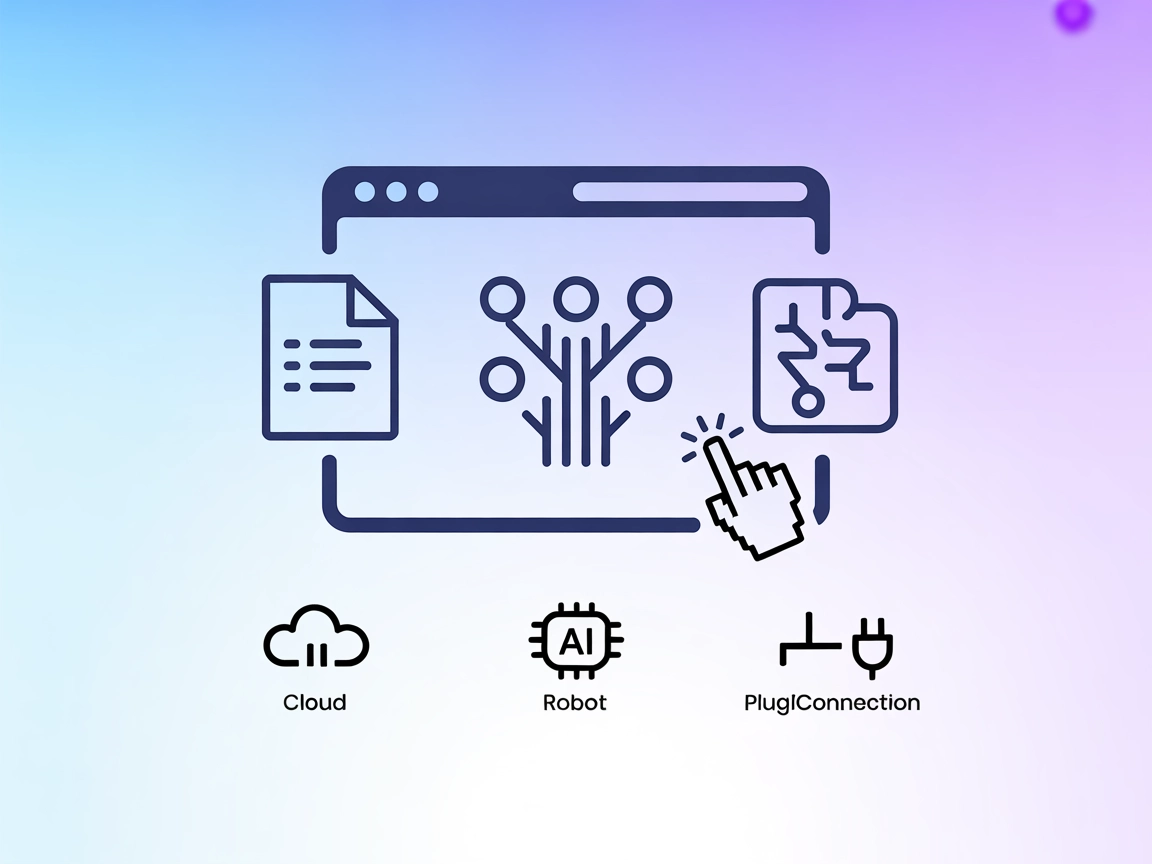
Mindmap MCP Server
The Mindmap MCP Server transforms Markdown documents into interactive mindmaps, empowering developers, educators, and AI assistants to visualize hierarchical in...
A cognitive map is a mental model of spatial relationships, crucial for navigation, learning, and memory in both humans and AI systems.
A cognitive map for evaluating object detection models in computer vision, ensuring precise detection and localization.") is a mental representation of spatial relationships and environments, allowing individuals to acquire, code, store, recall, and decode information about the relative locations and attributes of phenomena in their everyday or metaphorical spatial environment. This concept plays a crucial role in understanding how humans and animals navigate through space, remember environments, and plan routes. Cognitive maps are not limited to physical navigation; they also extend to abstract concepts, aiding in organizing and processing information in various domains.
The idea of the cognitive map was first introduced by psychologist Edward C. Tolman in 1948. Through his experiments with rats in mazes, Tolman observed that rats developed a mental representation of the maze to navigate efficiently, rather than simply following conditioned responses. He proposed that these internal representations or “cognitive maps” enabled the rats to find novel routes when familiar paths were blocked.
Building on Tolman’s work, neuroscientists John O’Keefe and Lynn Nadel published the seminal book The Hippocampus as a Cognitive Map in 1978. They provided neurophysiological evidence supporting the existence of cognitive maps by discovering place cells in the hippocampus, which are neurons that become active when an animal is in a specific location in its environment. Their work laid the foundation for understanding the neural mechanisms underlying spatial navigation and memory.
Cognitive maps function as mental representations of spatial information. They allow individuals to visualize and manipulate spatial relationships in their mind, aiding in tasks such as navigation, wayfinding, and spatial reasoning. These mental maps are constructed through experience and sensory inputs, integrating visual, auditory, proprioceptive, and other sensory information to form a cohesive understanding of the environment.
Formation and utilization of cognitive maps involve specific brain regions and neural mechanisms:
Cognitive maps enable spatial navigation by allowing individuals to:
In addition to external cues, cognitive maps rely on path integration, a process where individuals track their movements to update their position relative to a starting point.
Cognitive maps are closely tied to learning and memory:
The integration of cognitive maps into AI and automation has led to advancements in how machines understand and interact with the world.
While chatbots primarily process language, cognitive mapping principles enhance their capabilities:
Beyond physical navigation, cognitive maps relate to organizing information visually:
Cognitive mapping principles inform AI development in several ways:
Cognitive maps are internal representations of the external world, enabling navigation and understanding of spatial relationships. Key research papers include:
A Brain-Inspired Compact Cognitive Mapping System
Authors: Taiping Zeng, Bailu Si
This study addresses challenges in SLAM (Simultaneous Localization and Mapping) systems, especially for large-scale environments. The researchers developed a compact cognitive mapping approach inspired by neurobiological experiments, using neighborhood fields determined by movement information. The method optimizes the cognitive map as a robust non-linear least squares problem, enhancing efficiency and real-time performance. Tested in a maze environment, the approach restricts cognitive map growth while maintaining accuracy and compactness. Read more
Toward a Formal Model of Cognitive Synergy
Author: Ben Goertzel
This paper introduces “cognitive synergy,” where multiple cognitive processes cooperate to enhance system efficiency. Using category theory, it formalizes cognitive synergy and proposes models for intelligent agents, from simple reinforcement learning aligns AI with human values, enhancing performance in AI, robotics, and personalized recommendations.") agents to complex OpenCog agents. Cognitive processes help each other overcome bottlenecks, enhancing intelligence. Cognitive synergy involves processes associating through functors and natural transformations, offering insights for AI system design. Read more
A cognitive map is a mental representation of spatial relationships and environments, allowing individuals to visualize, store, and recall information about locations and their attributes for navigation and information processing.
The concept was first introduced by psychologist Edward C. Tolman in 1948 through his experiments with rats navigating mazes.
AI and robotics use principles of cognitive mapping to enable autonomous navigation, spatial reasoning, and context maintenance in systems such as robots, self-driving cars, and chatbots.
Key regions include the hippocampus (with place cells), medial entorhinal cortex (with grid cells), head direction cells, and border cells, all of which contribute to spatial memory and navigation.
Yes, cognitive maps are not limited to physical spaces—they also help organize and process abstract information, such as concept maps and mind maps in learning and problem-solving.
Discover how cognitive maps and AI tools can revolutionize navigation, memory, and automation. Try FlowHunt’s smart chatbot and AI solutions today.
The Mindmap MCP Server transforms Markdown documents into interactive mindmaps, empowering developers, educators, and AI assistants to visualize hierarchical in...
Cognitive computing represents a transformative technology model that simulates human thought processes in complex scenarios. It integrates AI and signal proces...
Associative memory in artificial intelligence (AI) enables systems to recall information based on patterns and associations, mimicking human memory. This memory...
